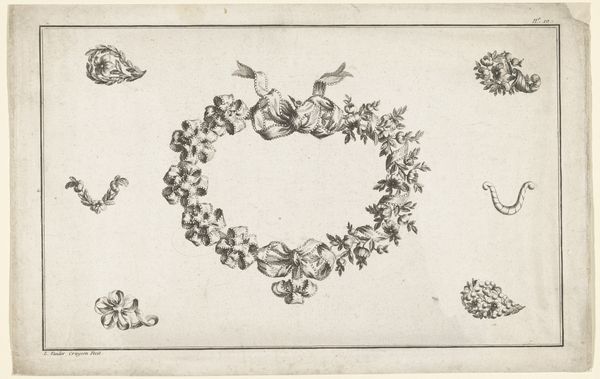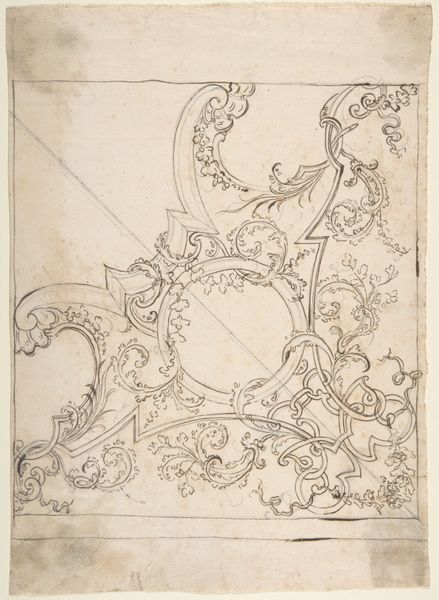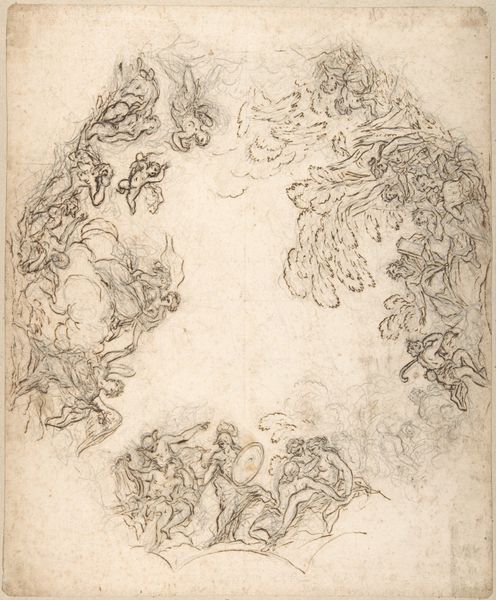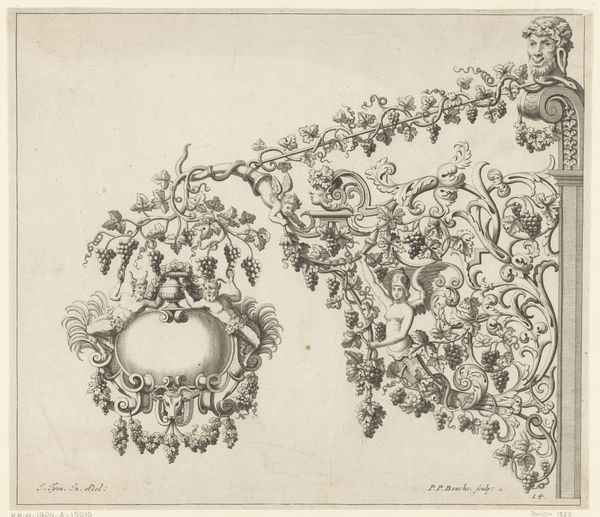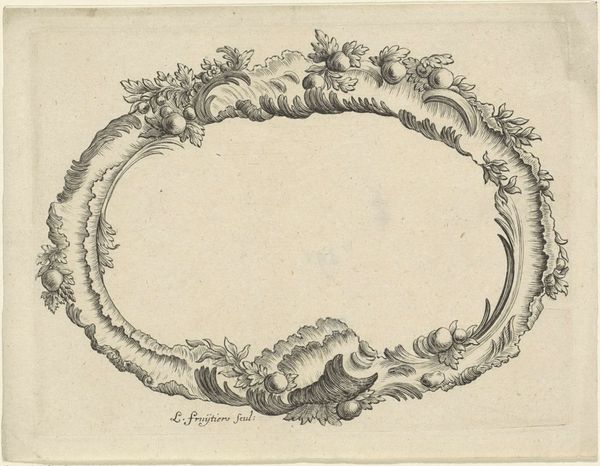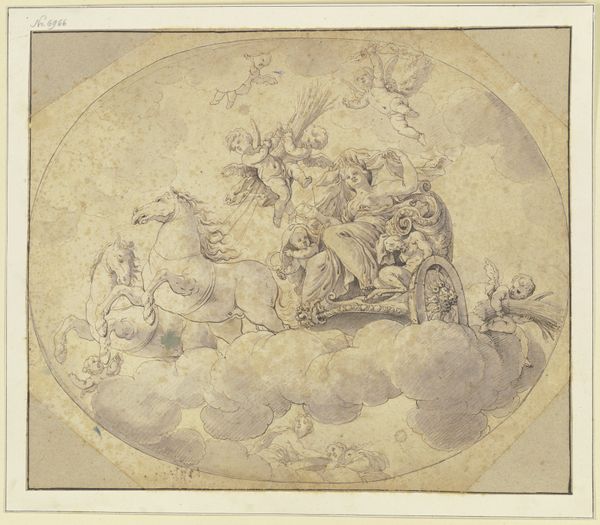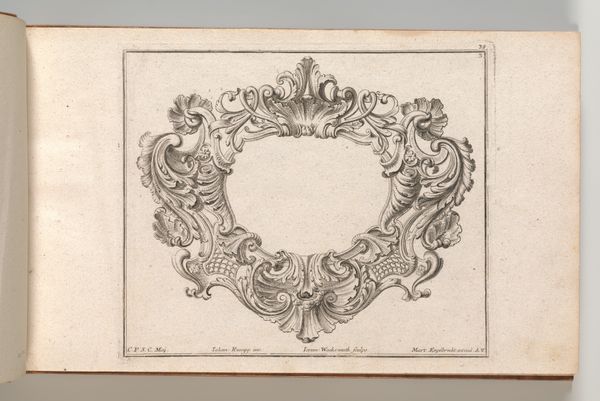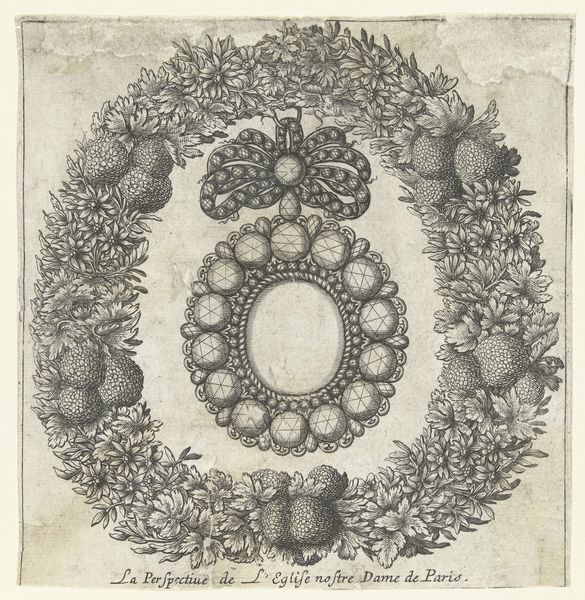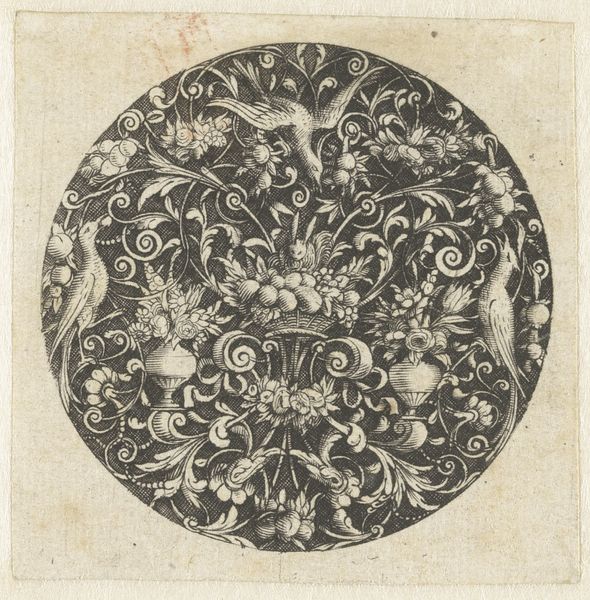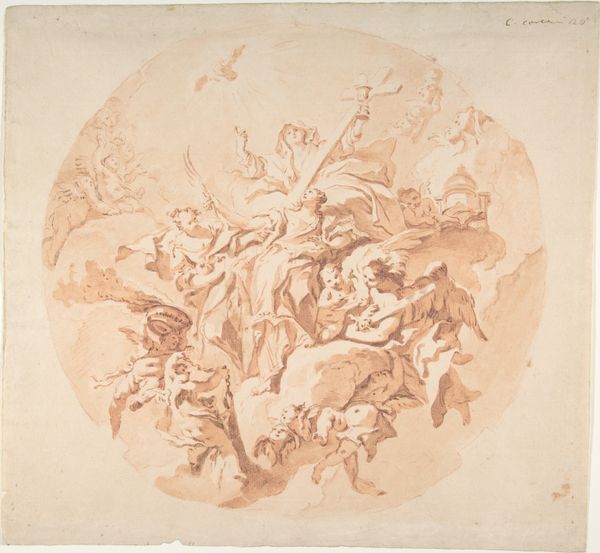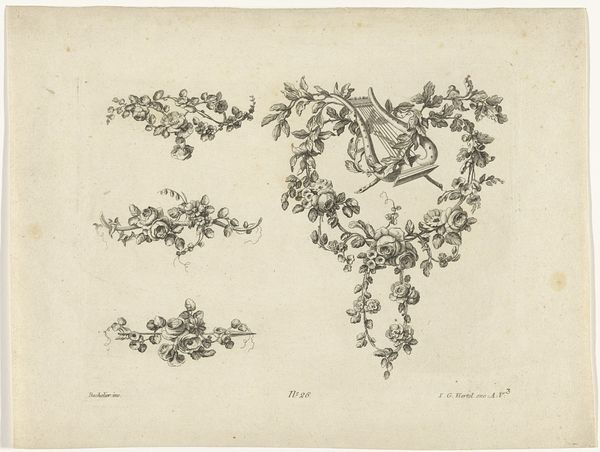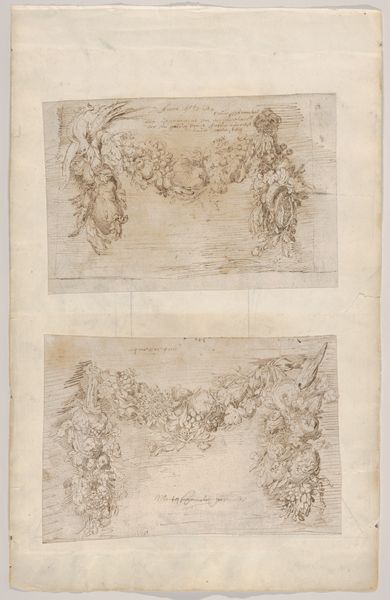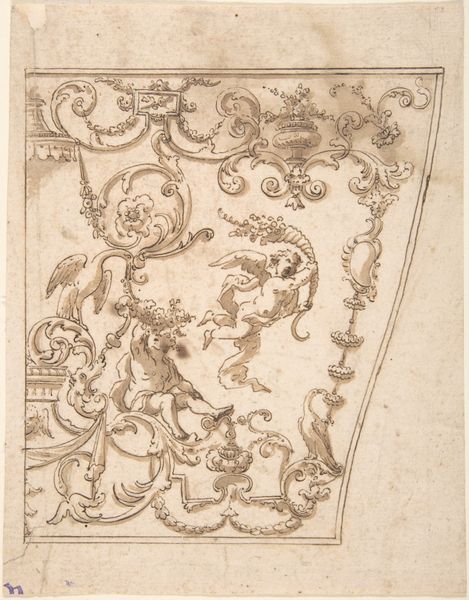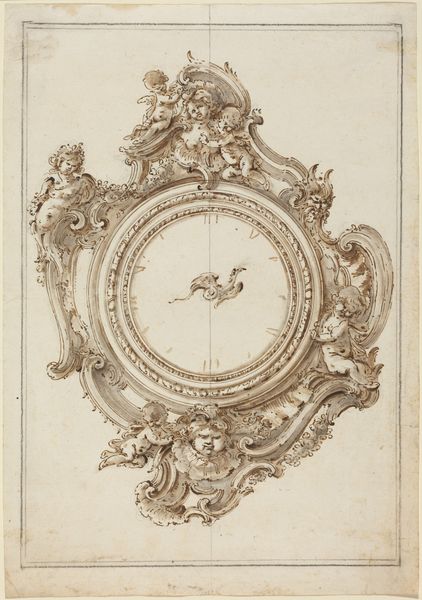
The Holy Spirit Surrounded by a Wreath of Flowers Held up by Infant Angels 1632 - 1698
0:00
0:00
drawing, print, paper, ink
#
drawing
#
allegory
#
baroque
# print
#
pencil sketch
#
figuration
#
paper
#
ink
#
angel
Dimensions: 7-1/2 x 8-1/8 in. (19.1 x 20.6 cm)
Copyright: Public Domain
Curator: Giovanni Battista Merano's "The Holy Spirit Surrounded by a Wreath of Flowers Held up by Infant Angels," likely created between 1632 and 1698, is a drawing rendered in ink on paper. The artwork is part of the collection at the Metropolitan Museum of Art. Editor: My immediate impression is that it’s so airy and delicate! There's an incredible lightness achieved despite the traditional religious subject. The wispy lines give it a fleeting, dreamlike quality. Curator: Indeed. Let us consider the formal composition: notice the circular arrangement of the floral wreath and the cherubic figures. The artist guides our gaze in a continuous loop, almost like a symbolic representation of eternity, anchoring the dove, which of course signifies the Holy Spirit, within its structure. The ink wash emphasizes the play of light and shadow, creating volume. Editor: It's interesting to situate this within its socio-political context, right? Baroque art was often used by the Catholic Church to reaffirm its authority during the Counter-Reformation. How might Merano be using this traditional religious symbolism – angels, doves, floral wreaths – to negotiate evolving ideas around power, religion, and the human form during that era? And is there something implicitly problematic, in a historical sense, in idealizing chubby, white male infants as purely "holy"? Curator: I appreciate your points, but I'm more drawn to how Merano used his medium, this understated ink, to subtly and devoutly enhance a deeper spiritual contemplation on faith and its rewards. There are even underdrawings beneath this sketch that emphasize Merano's attention to composition. I see an almost mathematically structured representation, a baroque ode to the sublime. Editor: Perhaps, but its worth noting that the figures are quite eroticized when observing them through the lens of contemporary, intersectional, gender theory. In that view, is Merano asking the viewer to question issues of divine versus human pleasure, through these barely-veiled depictions? I also have to wonder, given art history's record of erasing women's contributions, if women participated at all, even peripherally, in the concept or creation of this devotional image. Curator: We could delve into all the theory behind this for ages, but for me, it will always be about form, medium, composition, and how all three work together in Merano's drawing, ink on paper. This work achieves an incredible sense of spiritual transcendence through purely artistic choices. Editor: Agreed. Seeing this piece through many lenses is really enlightening. For some, it may offer solace and an embrace of their traditional faith. Others might find themselves contemplating historical social forces or even asking questions about what still resonates, or what should not, about these established forms of belief.
Comments
No comments
Be the first to comment and join the conversation on the ultimate creative platform.
